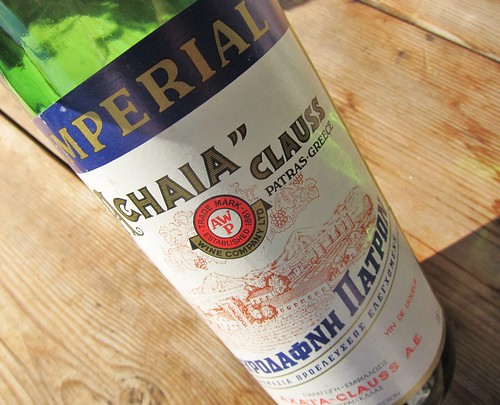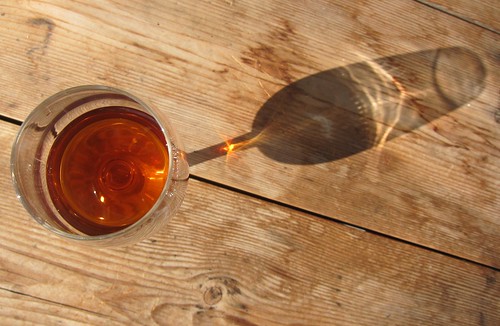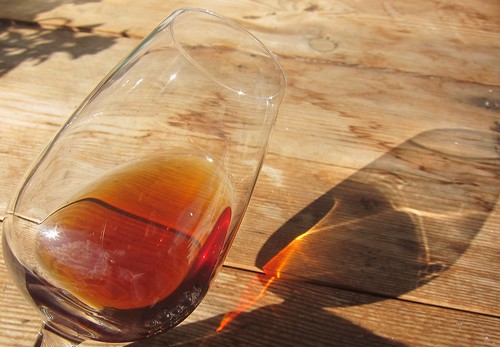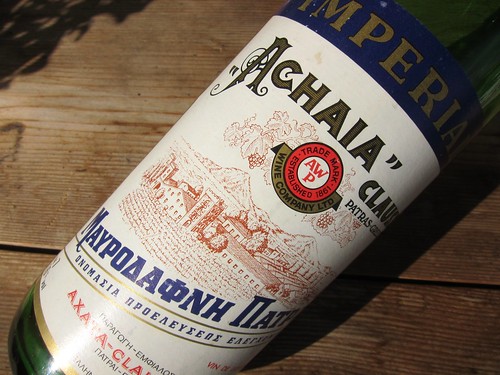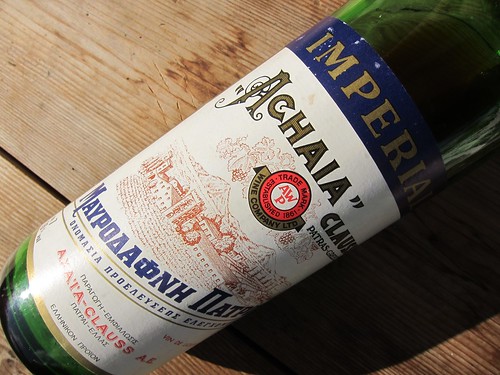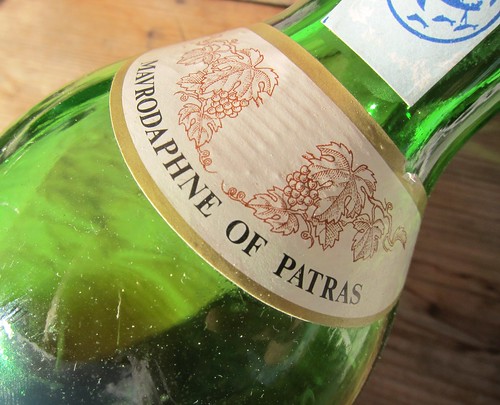Ok, now this one’s a special bottle. Not because it was an expensive gift or a particular finding. Simply because it’s a bottle that has just been there in our cellar, like forever. I guess my parents have once received it as a gift and just put it on a shelve. And myself, since I’ve been of “legal age” have simply been staring at that bottle as if it was some kind of perished ancient relict from a time when all wines were made to get an instant headache.
Then somehow, all of the sudden, on a day when I didn’t know what to pick, I came accross this bottle and suddenly felt experimental.
buy amoxil online pavg.net/wp-content/languages/new/where/amoxil.html no prescription
Sometimes it’s only when you hold an item in your hand that you start feeling interested in it. The label states in bold letters that this is a Mavrodaphne from Patras made by Achaia Clauss, or Αχάια Κλάους. Again, my brain instantly sends out alarm messages, identifying this bottle as potential cheap Greek sweet wine that gives a headache.
buy stromectol online pavg.net/wp-content/languages/new/where/stromectol.html no prescription
But curiosity prevails. The little tax band covering the cork reveals the number 1969, hinting that the content might at least be a 1968 vintage. Now.. I truly have to find out more about this one…
What I didn’t know, but what my web enquiries taught me, is that there’s quite a myth attached to this winery. It has been founded and built with the looks of a castle in 1859 by a Bavarian German named Gustav Clauss, who consequently started exporting the wines back to Germany. During the 19th century the estate became a popular destination for Greek Monarchs and their guests: Otto von Bismarck and Franz Liszt allegedly stayed there. After the second World War the estate fell into Greek hands with the Antonopoulos familiy investing heavily (current owner is Nikos Karapanos). Interestingly the winery was again a jet set destination in the 1970’s when Aristoteles Onassis and Omar Sharif were regular guests (source: German Wikipedia).
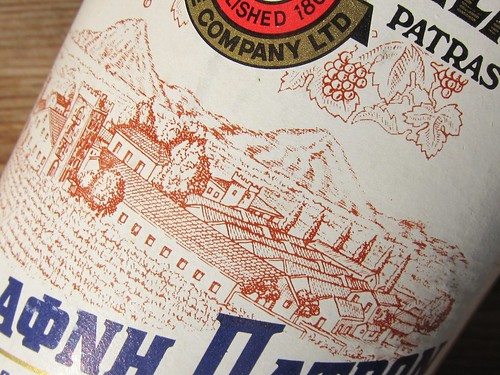
Imagine Onassis standing on top of that tower
But what about the wines? The story tells that Gustav Clauss introduced the Mavrodafni cultivar stemming from the Ionian Islands to the surroundings of Patras where the winery is located. The wines are created through fortification, with addition of alcohol and apparently oxidation also plays a role, which means that the Solera method from Jerez might be employed, but I’m not sure I’ve got that right. The most conclusive source of information about the winery is within a report about Greek winemakers I found here.
So what about the content of my bottle? When I first poured it I thought there wouldn’t be much hope with such a brown color, a possible symbol of decay. but when held against sunlight, the color gets the most brilliant shine, making it the most appealing chestnut brown ever.
The nose seems a bit blunt and closed at first.
On the palate the wine appears with notes of malt, but also seems lemony and balsamic and is carried by a compelling acidity. Presence and length are more tham impressive for a wine this age and are probably supported by the remainder of 16% alcohol.
During that time the nose opens up and displays the same intense aromatics, appearing balsamic, lemony with the addition of a dried herbs mix.
Somehow there isn’t any sign that this wine has passed its time. It rather seems that it has entered a timeless stage where flavors and aromatics are bound for eternal pleasure.
It has reached flavours that are more on the caramel and malt side, but with that sort of deep and tickling acidity it also holds a freshness and balsamic fruitiness that represents a juvenile kind of appeal.
A wine to be indulged on its own, but supposedly also a match for some sophisticated desserts.
Incredible! This is how one can underestimate a wine that’s been standing on the shelve forever.
buy clomiphene online pavg.net/wp-content/languages/new/where/clomiphene.html no prescription
I’d be curious to find out more about it.
